Web Performance in Action: Building Fast Web Pages
by Jeremy L. Wagner
Publisher: Manning Publications
Release Date: December 2016
ISBN: 9781617293771
Topic: Web Development
Book Description
Summary
Web Performance in Action is your companion guide to making websites faster. Youll learn techniques that speed the delivery of your site's assets to the user, increase rendering speed, decrease the overall footprint of your site, as well as how to build a workflow that automates common optimization techniques.
About the Technology
Nifty features, hip design, and clever marketing are great, but your website will flop if visitors think its slow. Network conditions can be unpredictable, and with todays sites being bigger than ever, you need to set yourself apart from the competition by focusing on speed. Achieving a high level of performance is a combination of front-end architecture choices, best practices, and some clever sleight-of-hand. This book will demystify all these topics for you.
About the Book
Web Performance in Action is your guide to making fast websites. Packed with Aha! moments and critical details, this book teaches you how to create performant websites the right way. Youll master optimal rendering techniques, tips for decreasing your sites footprint, and technologies like HTTP/2 that take your websites speed from merely adequate to seriously fast. Along the way, youll learn how to create an automated workflow to accomplish common optimization tasks and speed up development in the process.
Whats Inside
Foolproof performance-boosting techniques
Optimizing images and fonts
HTTP/2 and how it affects your optimization workflow
About the Reader
This book assumes that youre familiar with HTML, CSS, and JavaScript. Many examples make use of Git and Node.js.
About the Author
Jeremy Wagner is a professional front-end web developer with over ten years of experience.
Copyright
For online information and ordering of this and other Manning books, please visit www.manning.com. The publisher offers discounts on this book when ordered in quantity. For more information, please contact
Special Sales Department
Manning Publications Co.
20 Baldwin Road
PO Box 761
Shelter Island, NY 11964
Email: orders@manning.com
2017 by Manning Publications Co. All rights reserved.
No part of this publication may be reproduced, stored in a retrieval system, or transmitted, in any form or by means electronic, mechanical, photocopying, or otherwise, without prior written permission of the publisher.
Many of the designations used by manufacturers and sellers to distinguish their products are claimed as trademarks. Where those designations appear in the book, and Manning Publications was aware of a trademark claim, the designations have been printed in initial caps or all caps.
 Recognizing the importance of preserving what has been written, it is Mannings policy to have the books we publish printed on acid-free paper, and we exert our best efforts to that end. Recognizing also our responsibility to conserve the resources of our planet, Manning books are printed on paper that is at least 15 percent recycled and processed without the use of elemental chlorine.
Recognizing the importance of preserving what has been written, it is Mannings policy to have the books we publish printed on acid-free paper, and we exert our best efforts to that end. Recognizing also our responsibility to conserve the resources of our planet, Manning books are printed on paper that is at least 15 percent recycled and processed without the use of elemental chlorine.

| Manning Publications Co. 20 Baldwin Road PO Box 761 Shelter Island, NY 11964 |
Development editor: Susanna Kline
Review editor: Ivan Martinovi
Technical development editor: Nick Watts
Project editor: Kevin Sullivan
Copyeditor: Sharon Wilkey
Proofreader: Elizabeth Martin
Technical proofreader: David Fombella Pombal
Typesetter: Gordan Salinovic
Cover designer: Marija Tudor
ISBN 9781617293771
Printed in the United States of America
1 2 3 4 5 6 7 8 9 10 EBM 21 20 19 18 17 16
Brief Table of Contents
Copyright
Brief Table of Contents
Table of Contents
Foreword
Preface
Acknowledgments
About this Book
About the Author
About the Cover Illustration
Chapter 1. Understanding web performance
Chapter 2. Using assessment tools
Chapter 3. Optimizing CSS
Chapter 4. Understanding critical CSS
Chapter 5. Making images responsive
Chapter 6. Going further with images
Chapter 7. Faster fonts
Chapter 8. Keeping JavaScript lean and fast
Chapter 9. Boosting performance with service workers
Chapter 10. Fine-tuning asset delivery
Chapter 11. Looking to the future with HTTP/2
Chapter 12. Automating optimization with gulp
Appendix A. Tools reference
Appendix B. Native equivalents of common jQuery functionality
Index
List of Figures
List of Tables
List of Listings
Table of Contents
Copyright
Brief Table of Contents
Table of Contents
Foreword
Preface
Acknowledgments
About this Book
About the Author
About the Cover Illustration
Chapter 1. Understanding web performance
1.1. Understanding web performance
1.1.1. Web performance and the user experience
1.1.2. How web browsers talk to web servers
1.1.3. How web pages load
1.2. Getting up and running
1.2.1. Installing Node.js and Git
1.2.2. Downloading and running the clients website
1.2.3. Simulating a network connection
1.3. Auditing the clients website
1.4. Optimizing the clients website
1.4.1. Minifying assets
1.4.2. Using server compression
1.4.3. Optimizing images
1.5. Performing the final weigh-in
1.6. Summary
Chapter 2. Using assessment tools
2.1. Evaluating with Google PageSpeed Insights
2.1.1. Appraising website performance
2.1.2. Using Google Analytics for bulk reporting
2.2. Using browser-based assessment tools
2.3. Inspecting network requests
2.3.1. Viewing timing information
2.3.2. Viewing HTTP request and response headers
2.4. Rendering performance-auditing tools
2.4.1. Understanding how browsers render web pages
2.4.2. Using Google Chromes Timeline tool
2.4.3. Identifying problem events: thy enemy is jank
2.4.4. Marking points in the timeline with JavaScript
2.4.5. Rendering profilers in other browsers
2.5. Benchmarking JavaScript in Chrome
2.6. Simulating and monitoring devices
2.6.1. Simulating devices in the desktop web browser
2.6.2. Debugging websites remotely on Android devices
2.6.3. Debugging websites remotely on iOS devices
2.7. Creating custom network throttling profiles
2.8. Summary
Chapter 3. Optimizing CSS
3.1. Dont talk much and stay DRY
3.1.1. Write shorthand CSS
3.1.2. Use shallow CSS selectors
3.1.3. Culling shallow selectors
3.1.4. LESS is more and taming SASS
3.1.5. Dont repeat yourself
3.1.6. Going DRY
3.1.7. Finding redundancies with csscss
3.1.8. Segment CSS
3.1.9. Customize framework downloads
3.2. Mobile-first is user-first
3.2.1. Mobile-first vs. desktop-first
3.2.2. Mobilegeddon
3.2.3. Using Googles mobile-friendly guidelines
3.2.4. Verifying a sites mobile-friendliness
3.3. Performance-tuning your CSS
3.3.1. Avoiding the @import declaration
3.3.2. @import serializes requests
3.3.3.parallelizes requests
3.3.4. Placing CSS in the
3.3.5. Preventing the Flash of Unstyled Content
3.3.6. Increasing rendering speed
Next page
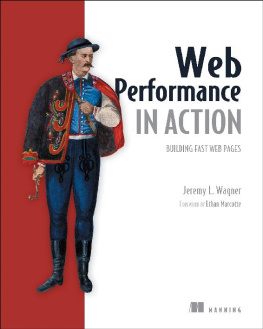

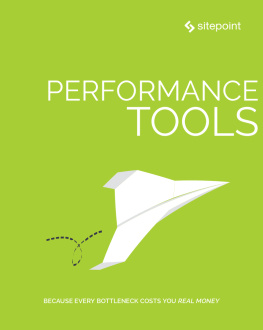

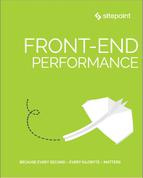



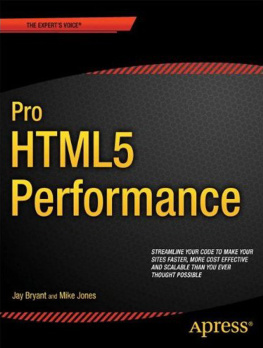


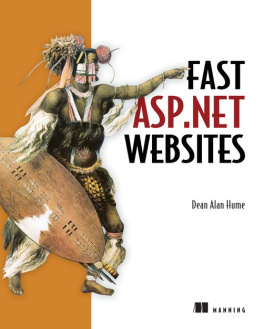
 Recognizing the importance of preserving what has been written, it is Mannings policy to have the books we publish printed on acid-free paper, and we exert our best efforts to that end. Recognizing also our responsibility to conserve the resources of our planet, Manning books are printed on paper that is at least 15 percent recycled and processed without the use of elemental chlorine.
Recognizing the importance of preserving what has been written, it is Mannings policy to have the books we publish printed on acid-free paper, and we exert our best efforts to that end. Recognizing also our responsibility to conserve the resources of our planet, Manning books are printed on paper that is at least 15 percent recycled and processed without the use of elemental chlorine.